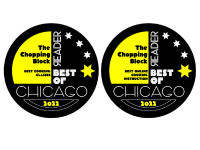Understanding how acids and fats affect the flavor and texture of our food can be an ace card in your cooking game.
Here are a few fundamental approaches to using acids and fats properly.
For starters, what is considered an acid in cooking? Here are some common cooking acids:
- Fruit Juices like lemon, lime, grapefruit, pineapple, apple
- Vinegars
- Wine and alcohol
- Tomatoes and their juice
- Buttermilk (the lactic acid help tenderize)
.jpg?width=600&height=450&name=acids%20(1).jpg) Acids can work as tenderizers by breaking down fibers in foods that are cooked or marinated in it. As it tenderizes, it also penetrates and flavors the food. When planning your dish, choose an acid which flavor will compliment the rest of the meal.
Acids can work as tenderizers by breaking down fibers in foods that are cooked or marinated in it. As it tenderizes, it also penetrates and flavors the food. When planning your dish, choose an acid which flavor will compliment the rest of the meal.
Acids are also detected strongly on our pallets. Their presence is usually easy to notice and impart good flavor, but can be a little overpowering at times. That's when we need to balance that mouth-puckering acidity with a fat. The use of fats also enhances flavor and texture.
Here are some common fats used in cooking:
- Cooking oils like canola, olive and sesame
- Other oils like avocado, hazelnut, pistachio
- Butter and shortening
- Animal fats like beef tallow or duck fat or bacon fat
.jpg?width=600&height=450&name=fats%20(1).jpg) By adding one of these fats to your dish, the creaminess tends to "mellow out" the tart mouth sensation of the acid and adds its own flavor to the dish. The right balance leads to fantastic results. Fats can add a lot of flavor.
By adding one of these fats to your dish, the creaminess tends to "mellow out" the tart mouth sensation of the acid and adds its own flavor to the dish. The right balance leads to fantastic results. Fats can add a lot of flavor.
So how do you use acids and fats in cooking? There are many ways to incorporate the two.
- Salad dressings: use a 2:1 ratio of fat to acid - if the fat you want to use is solid (like bacon fat) melt it in a pan first then incorporate it into the acid.
- Marinades: I use a 1:1 ratio for marinades - let food marinade a minimum of 2 hours, ideally 12.
- While simmering, braising or stewing using an acid like wine or tomatoes, swirl in some butter at the end to add some creaminess or add some heavy cream or creme fraiche.
Here is a basic Asian-style marinades that goes great with just about anything:
1/4 cup fresh lime juice
1/4 cup fresh orange juice
2 Tablespoons rice wine vinegar
2 Tablespoons soy or tamari sauce
2 Tablespoons Veri Terriyaki sauce
1 Tablespoons sambal
1 Tablespoons fresh grated ginger
2 scallions, sliced
2 cloves garlic, minced
Combine all ingredients and pour over pork chops, chicken, shrimp, portabella mushrooms, flank steak etc. Let marinade 4-12 hours and then cook.
.jpg?width=600&height=450&name=marinade%20(1).jpg)
The Chopping Block offers cooking classes every day that give you the opportunity to learn and master these techniques in a hands-on environment with one of our highly experienced and personable chefs. Flavor Dynamics and Sauce Boot Camp are just a couple of them, but almost all of our classes involve balancing fats and acids and will give you great tips and tricks.











